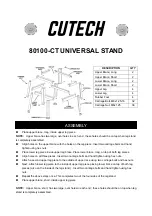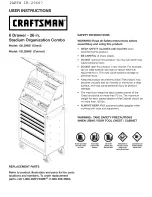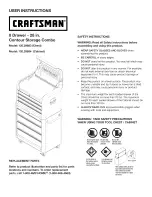
18
| SBS 601-1501 W SOL
www.stiebel-eltron.COM
Installation
Commissioning
8.3 Assembly
8.3.1 Fitting the thermal insulation, if appropriate.
f
f
Position the appliance in its intended site.
f
f
Fit the thermal insulation according to the instructions sup-
plied. For this, ensure that there is enough space for the
installation task. You can then link the appliance into the
heating and DHW system.
8.3.2 Installing the manual air vent valve
26
�0
3�
01
�0
97
3
f
f
Install a manual air vent valve at the air vent valve
connection.
8.3.3 Fitting the water connection and the safety assembly
!
Material damage
Carry out all water connection and installation work in
accordance with regulations.
f
f
Flush the line thoroughly.
f
f
Observe the information in the installation instructions of the
safety assembly.
f
f
Connect the DHW outlet and the cold water inlet lines with
the safety assembly. Bear in mind that, depending on the
static pressure, you may also need a pressure reducing valve.
Connect the hydraulic connections with flat gaskets.
f
f
Size the drain so that water can drain off unimpeded when
the safety valve is fully opened. The blow-off aperture of the
safety valve must remain open towards the atmosphere.
f
f
Fit the blow-off line of the safety assembly with a constant
slope.
8.3.4 Inserting the temperature sensors
f
f
Apply heat conducting paste to the temperature sensors.
f
f
Insert the temperature sensors as far as they will go into the
connections for HP return sensor and HP DHW sensor (see
chapter „Specification / Dimensions and connections“).
9. Commissioning
f
f
Open a downstream draw-off point until the appliance has
filled up and the pipes are free of air.
f
f
Vent the indirect coils after filling the heat pump system.
f
f
Fit the accessories and check them if necessary.
f
f
Check the function of the safety valve.
9.3.1 Water quality, solar circuit
A glycol/water mixture of up to 60 % is permitted for the indirect
coil in the solar circuit if only dezincification-resistant metals,
glycol-resistant gaskets and diaphragm expansion vessels suitable
for glycol are used throughout the installation.
9.3.2 Oxygen diffusion
!
Material losses
Avoid open heating systems and plastic pipes in under-
floor heating systems which are permeable to oxygen.
In underfloor heating systems with plastic pipes that are per-
meable to oxygen and in open vented heating systems, oxygen
diffusion may lead to corrosion on the steel components of the
heating system (e.g. on the indirect coil of the DHW cylinder, on
buffer cylinders, steel heating elements or steel pipes).
!
Material losses
The products of corrosion (e.g. rusty sludge) can settle in
the heating system components and can result in a lower
output or fault shutdowns due to reduced cross-sections.
!
Material losses
Avoid open vented solar thermal systems and plastic
pipes which are permeable to oxygen.
With plastic pipes that are permeable to oxygen, oxygen diffusion
may lead to corrosion on the steel components of the solar thermal
system (e.g. on the indirect coil of the DHW cylinder).
10. Taking the appliance out of use
f
f
Disconnect the appliance from the mains at the MCB/fuse in
the fuse box.
f
f
Drain the appliance. See chapter “Maintenance / Draining the
appliance”.
11. Recommissioning
See chapter “Commissioning”.
















































